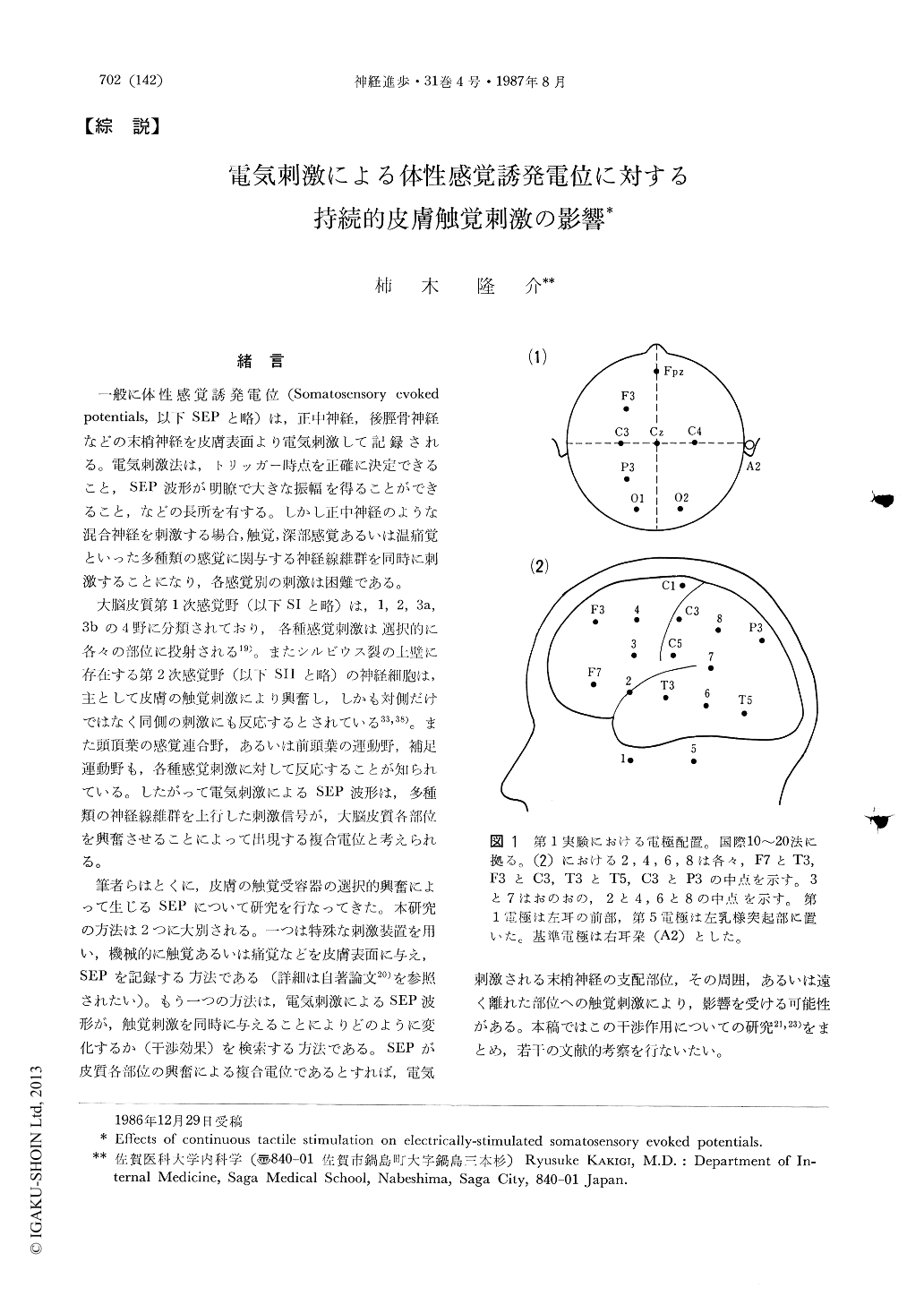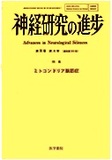Japanese
English
- 有料閲覧
- Abstract 文献概要
- 1ページ目 Look Inside
緒言
一般に体性感覚誘発電位(Somatosensory evoked potentials,以下SEPと略)は,正中神経,後脛骨神経などの末梢神経を皮膚表面より電気刺激して記録される。電気刺激法は,トリッガー時点を正確に決定できること,SEP波形が明瞭で大きな振幅を得ることができること,などの長所を有する。しかし正中神経のような混合神経を刺激する場合,触覚,深部感覚あるいは温痛覚といった多種類の感覚に関与する神経線維群を同時に刺激することになり,各感覚別の刺激は困難である。
大脳皮質第1次感覚野(以下SIと略)は,1,2,3a,3bの4野に分類されており,各種感覚刺激は選択的に各々の部位に投射される19)。またシルビウス裂の上壁に存在する第2次感覚野(以下SIIと略)の神経細胞は,主として皮膚の触覚刺激により興奮し,しかも対側だけではなく同側の刺激にも反応するとされている33,38)。また頭頂葉の感覚連合野,あるいは前頭葉の運動野,補足運動野も,各種感覚刺激に対して反応することが知られている。したがって電気刺激によるSEP波形は,多種類の神経線維群を上行した刺激信号が,大脳皮質各部位を興奮させることによって出現する複合電位と考えられる。
The influence of continuous tactile stimulation on somatosensory evoked potentials (SEPs) fol-lowing electrical stimulation of the median nerve was investigated in normal young subjects. Tactile stimulation was applied to the various parts of the body surface such as hand, forearm, face or foot on either side, concurrently with the electrical stimulation of the nerve. The distribution of the effect was demonstrated in the scalp topographical maps of the "difference waveforms", which was derived by subtracting the "interferene waveform (SEPs with tactile interference)" from the"control waveform (SEPs without tactile interference)".

Copyright © 1987, Igaku-Shoin Ltd. All rights reserved.


